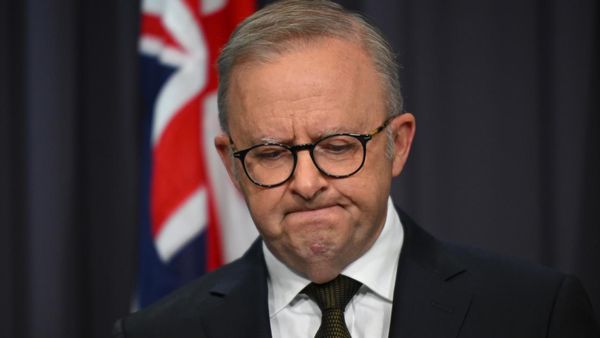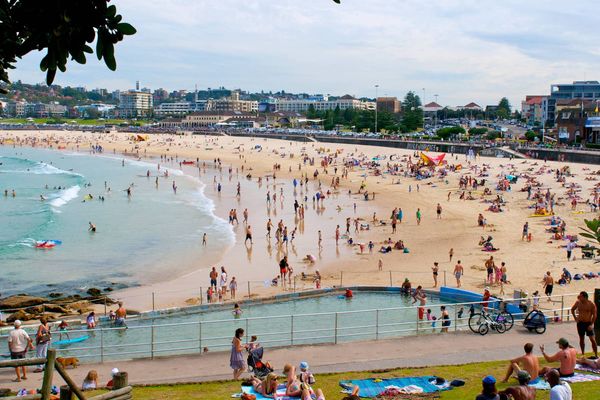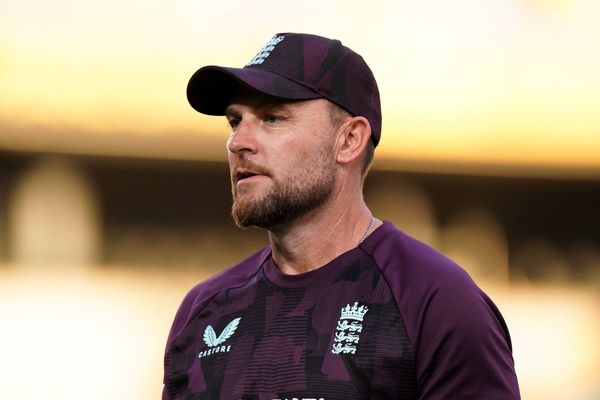
The art of the stroke used to be a hallowed practice in Irish politics. To pull a stroke meant wiping the other fellow’s eye, by fair means or foul. The art might involve anything from “brown envelope” bribes and “nod-n-wink” sneaky deals to a type of sophisticated chicanery by outwardly unsophisticated politicians, known as “cute hoorism”. This was the culture of the Galway tent, so called because of an access-to-power fundraiser the Fianna Fáil party hosted for wealthy businessmen at the west of Ireland horseraces every summer.
Micheál Martin, who was – eventually – reinstalled as taoiseach on Thursday, after scenes of uproar in the Dáil the previous day, declared the age of the Galway tent dead more than 20 years ago, after state tribunals unearthed secret payments made by businessmen to Charles Haughey and Bertie Ahern, his predecessors as Fianna Fáil leaders. Self-described as “a person of substance”, even Martin’s most ardent critics acknowledge his “decency”.
His personal integrity was a factor in Fianna Fáil’s return from the general election on 29 November as the country’s biggest parliamentary party. But the composition of his new coalition government and the rancorous episode on Wednesday that forced the abandonment of his election as taoiseach after three adjournments have prompted accusations of stroke politics against the leader former taoiseach Leo Varadkar once likened to a parish priest.
The cause of Martin’s travails is Michael Lowry, the Dáil’s most notorious member. Two state tribunals have investigated him. Among their findings were that, when he was the minister for communications in the 1990s, he gave “substantive information” to businessman Denis O’Brien relating to a state competition for a lucrative mobile phone licence; that he was an “insidious and pervasive influence” on the process; that, in “a cynical and venal abuse of office”, he attempted to increase the rent payable by a state company to another businessman, Ben Dunne, who had paid for the refurbishment of Lowry’s home; and that his behaviour was “profoundly corrupt to a degree that was nothing short of breathtaking”.
Lowry resigned as minister and from the Fine Gael party after his financial relationship with Dunne emerged. When the Moriarty tribunal report was published in 2011, the Dáil passed a motion, tabled by Fianna Fáil, calling on him to resign his seat.
“We must rehabilitate the idea of civic virtue and the idea of the duty and nobility of public service,” Martin declared. Lowry rejected the tribunals’ findings as “factually wrong”. He refused to go. He continued voting with succeeding Fine Gael-led governments in an informal arrangement of mutual assistance. Despite a subsequent conviction for tax non-compliance, he has topped the poll in his Tipperary North constituency ever since.
The shocker is that Lowry is now the cornerstone of Martin’s new government, having led a group of eight independent TDs in government formation talks. Lowry extracted support from Fianna Fáil and its coalition partner Fine Gael for the election of their member, Verona Murphy, as Ceann Comhairle (speaker), along with two junior ministries and two so-called super juniors, commensurate with higher-paid positions and the entitlement to attend cabinet meetings. During the negotiations, the Irish Times revealed that the Criminal Assets Bureau of the Garda Síochána (police force) last year sent to the director of public prosecutions the file from its 14-year investigation arising from the tribunal findings. It is now up to the DPP to decide if any criminal charges should be brought.
What provoked the mostly leftwing opposition’s ire when the new Dáil met to elect the taoiseach on Wednesday was Lowry’s insistence, with the government’s support, that he and the two remaining members of his group be treated as part of the opposition, sharing its allotted speaking times. Sinn Féin, the Labour party, the Social Democrats and People Before Profit-Solidarity revolted en masse.
On her first day in the chair, Murphy lost control of the proceedings and postponed Martin’s election until the next day. Even then, the fury was still palpable. Pearse Doherty. Sinn Féin’s deputy leader in the Dáil, read new allegations about concealed payments to Lowry connected with the sale of Doncaster Rovers football club in England into the record. Ivana Bacik, the Labour party leader, said: “All we need now is the return of the Galway tent to complete the picture.”
More was to come. When Martin announced his 15-person cabinet, it featured just three women, with only one woman getting any of Fianna Fáil’s share of eight portfolios. Compounding the male, pale and stale image was one Michael Healy-Rae’s impending appointment as a junior minister. One of two wealthy County Kerry brothers in the Dáil, the 57-year-old, who is never seen without his flat cap on his head, makes a virtue of parish-pump politics. A constant thorn in the side of previous governments with his demands for exchequer funds for Kerry, which he has modestly described as “the tourism capital of the world”, he told reporters “you couldn’t put a figure” on the deal he and his climate crisis-denying brother, Danny, struck with the government, “because it is so much”.
The cost to Martin was not only financial when Healy-Rae went on RTÉ radio on Wednesday evening to pillory the opposition’s revolt, only to hang up midway through the interview when challenged to cite a precedent for a group of TDs simultaneously sitting on both the government and the opposition benches.
The united stance adopted by opposition parties in resisting Lowry’s manoeuvrings to become the fox in the henhouse may signal greater future cooperation on the left, as has long been espoused by the Labour Party and People Before Profit. The need for a robust Dáil Éireann was highlighted on Thursday. While TDs were still bristling over procedures, the US president, Donald Trump, was telling Davos delegates he abandoned a construction project at his Irish golf course because of delays caused by EU red tape and moaned about a €15bn EU tax fine on Apple in Ireland.
There was widespread approval after the Irish election in November that voters had stuck with incumbent centrist parties, contrary to trends elsewhere. The question now, amid voter cynicism about resurgent old-style stroke politics, is how long can Martin’s government, with its Lowry glue, hold the centre.
Justine McCarthy is a columnist with the Irish Times and the author of An Eye on Ireland
Do you have an opinion on the issues raised in this article? If you would like to submit a response of up to 300 words by email to be considered for publication in our letters section, please click here.







